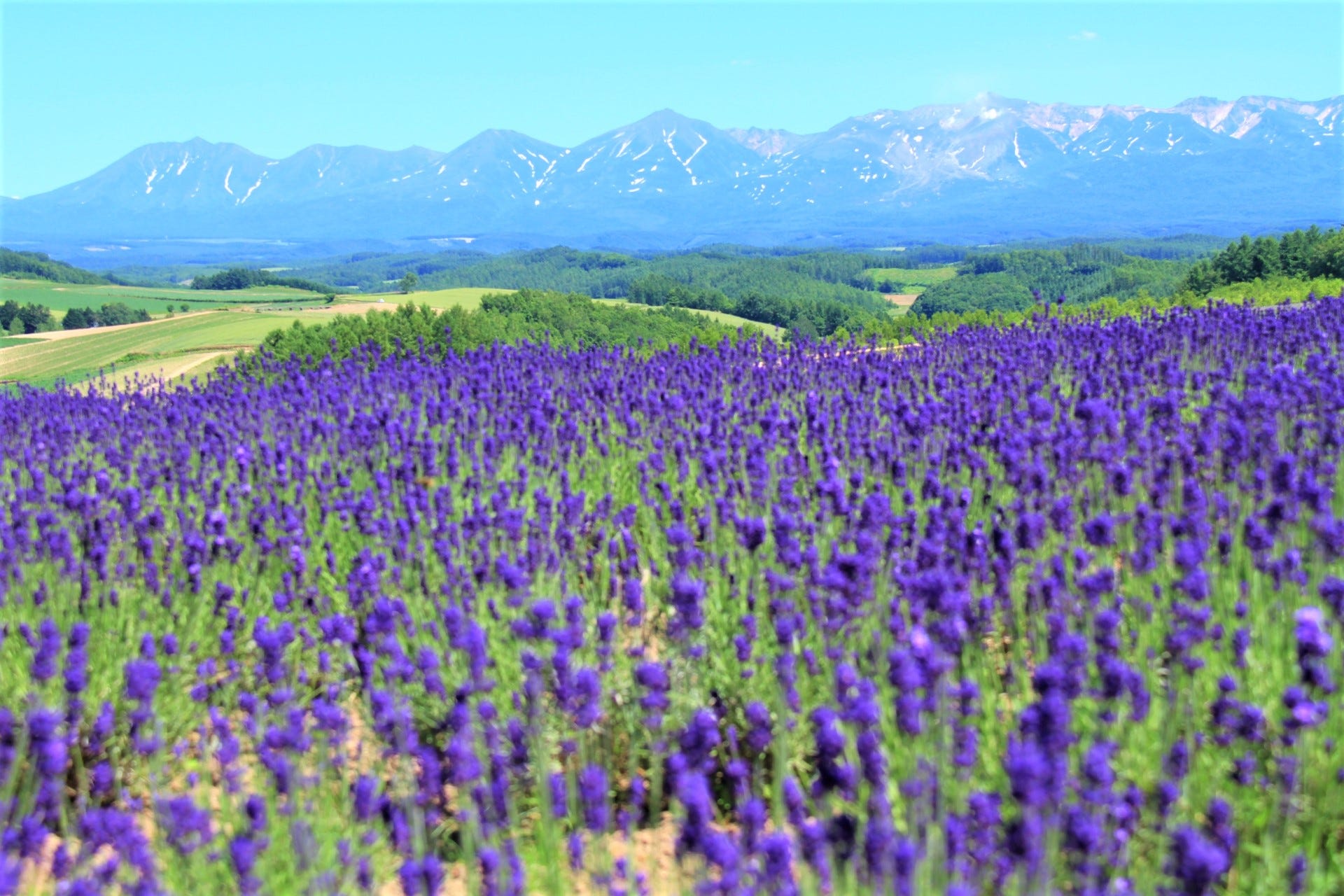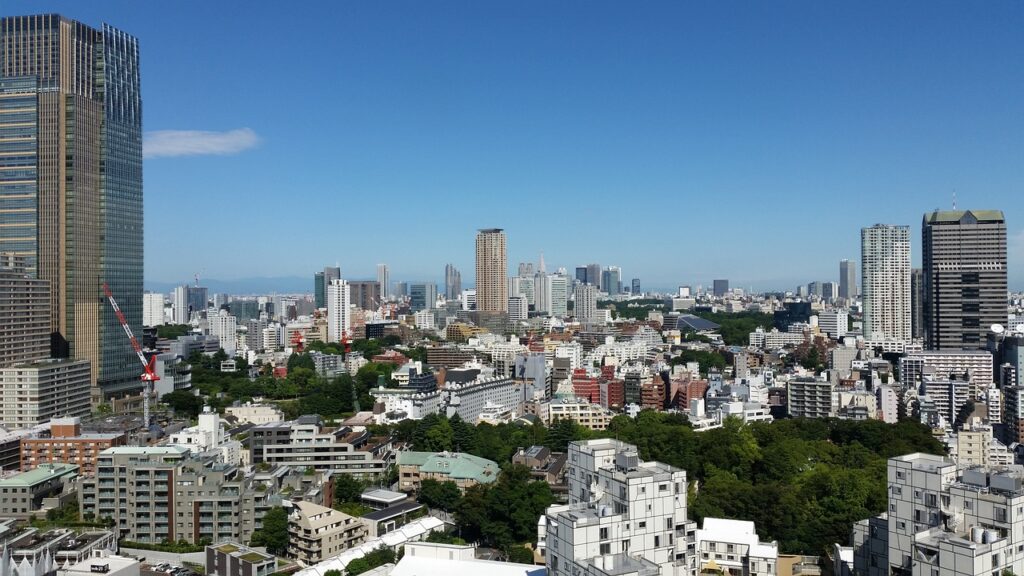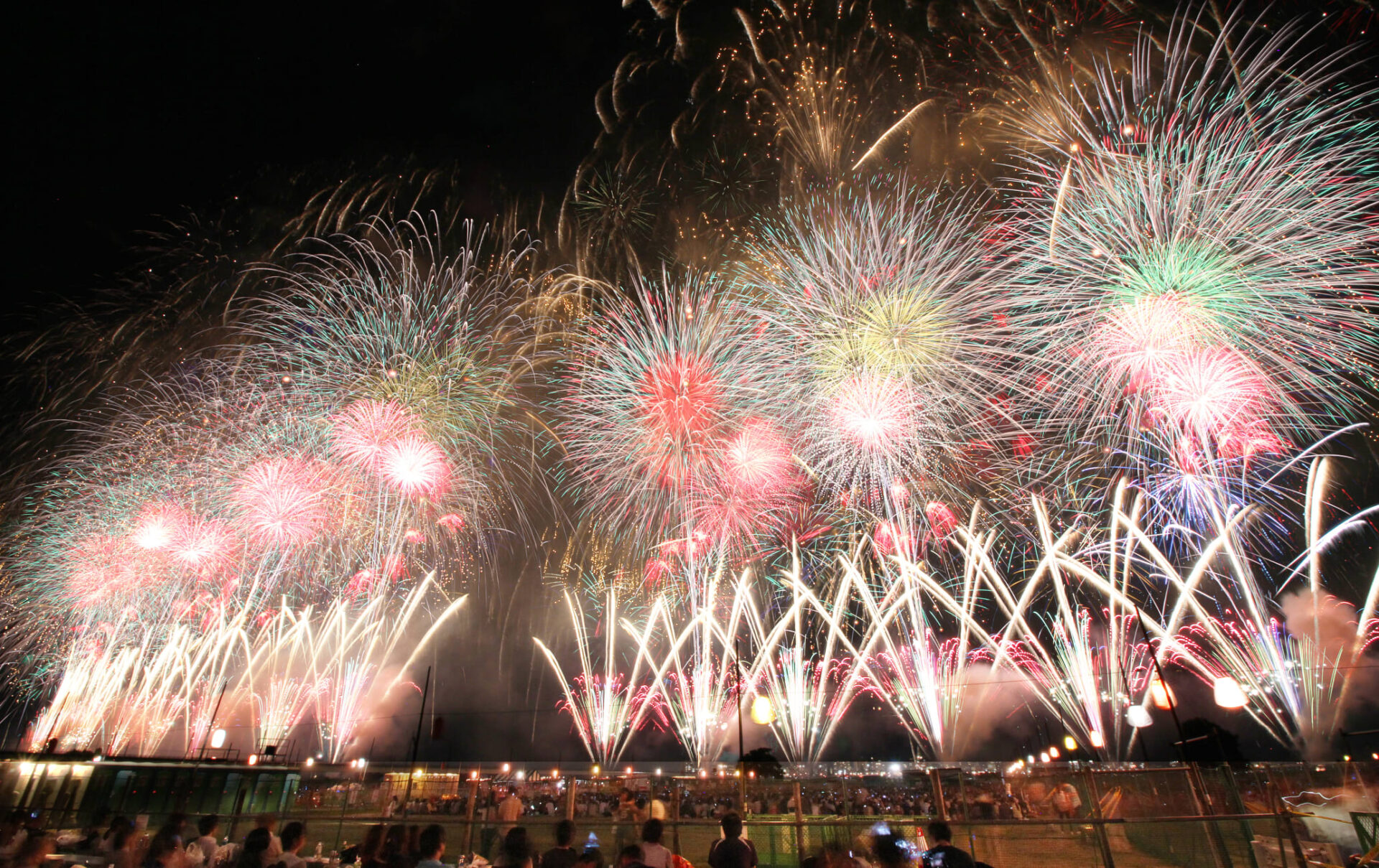Visiting Japan in July offers a unique blend of experiences that can captivate even those who typically avoid heat and crowds. From vibrant festivals that showcase Japan’s rich cultural heritage to breathtaking summertime landscapes, there is much to enjoy. You’ll have the chance to sample unique seasonal cuisine that you can’t find at any other time of year. Moreover, hidden gems and less touristy spots become accessible, providing a more intimate glimpse of the country. Whether you’re watching stunning summer fireworks or participating in traditional events, Japan in July promises a memorable adventure.
Festivals: Experience Japan’s Rich Cultural Heritage
Japan in July is a vibrant spectacle of tradition and festivity. This month hosts some of the most captivating and culturally rich festivals, offering unique insights into Japanese heritage. Here are some must-see festivals to make your visit unforgettable:
Gion Matsuri: Held in Kyoto, this is one of Japan’s most famous festivals. Witness the grand parade of yamaboko floats and participate in numerous traditional events throughout the city.
Sumida River Fireworks: A highlight in Tokyo’s event calendar, this fireworks display offers a mesmerizing fusion of tradition and modernity. Enjoy the view while tasting local delights from various food stalls.
Tenjin Matsuri: Known as one of Japan’s three greatest festivals, it takes place in Osaka. This festival features a lively boat procession and an energetic street parade, highlighting both Shinto rituals and musical performances.
Mitama Matsuri: Head to Tokyo’s Yasukuni Shrine to see over 30,000 lanterns light up the night in honor of ancestral spirits, providing a serene and beautiful ambiance.
Therefore, visiting Japan in July offers a vibrant array of cultural experiences that make braving the summer heat wholly rewarding.
Nature’s Beauty: Scenic Summertime Landscapes
When you think of Japan in July, one of the first things that comes to mind is its breathtaking natural beauty. Despite the summer heat, July transforms Japan into a paradise of lush greens, vibrant flowers, and serene water bodies. Here’s why you should embrace the great outdoors:
- Lavender Fields in Furano: July is the peak season to witness the expansive lavender fields in Furano, Hokkaido. The sight of endless purple blooms with the surrounding mountains as a backdrop is a visual treat.
- Hydrangea Gardens: Throughout Japan in July, various temples and gardens showcase blooming hydrangeas. Kamakura’s Meigetsu-in Temple and Hakone’s Gora Park are must-visit spots for hydrangea enthusiasts.
- Lakes and Rivers: Clear and calm lakes like Lake Kawaguchi near Mt. Fuji offer stunning reflections of the landscape. Rivers such as the Kamo River in Kyoto provide picturesque spots for relaxation and leisure walks.
In summary, July may bring the heat, but it also brings a vibrant palette of nature’s finest displays, making it the perfect month to enjoy Japan’s scenic landscapes.
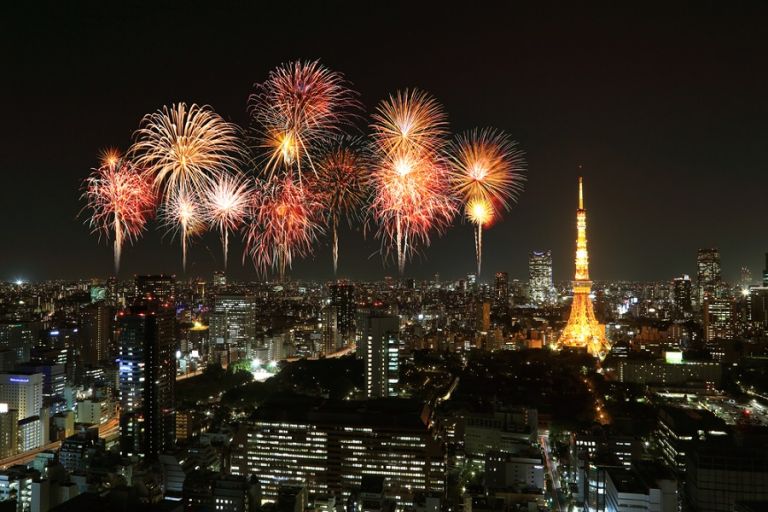
Unique Seasonal Cuisine: Taste Japan’s Summer Delicacies
When you visit Japan in July, you have the opportunity to savor the region’s special seasonal cuisine. Japanese food culture is deeply intertwined with the seasons, and summer is no exception.
Here are some must-try summer dishes:
- Hiyashi Chuka: This cold noodle dish is a refreshing way to beat the heat. Made with chilled ramen noodles, it’s typically topped with vegetables, egg, and ham, all drizzled with a tangy sesame or soy-based dressing.
- Unagi (Grilled Eel): Known for its rich flavor, unagi is believed to provide stamina during the hot summer days. Usually served over rice, this delicacy is especially popular around Midsummer Day of the Ox.
- Kakigori: Cool down with this traditional shaved ice dessert. Flavored with syrups like matcha, strawberry, or mango, kakigori is a sweet treat that’s sure to delight.
- Edamame: These boiled green soybeans, lightly salted, make a perfect snack with a cold drink on a warm evening.
Embrace the tastes of Japan in July and experience the country’s remarkable culinary offerings that are only available during the summer months.
Less Touristy Spots: Explore Hidden Gems
Visiting Japan in July offers a chance to explore less touristy spots, perfect for those who prefer tranquility and unique experiences over crowded attractions. You can discover several hidden gems that provide a distinct sense of Japan’s rich culture and natural beauty without the hustle and bustle of typical tourist hotspots.
Some must-visit hidden gems include:
- Tottori Sand Dunes: Located in the Tottori Prefecture, these vast dunes are a coastal wonder reminiscent of a desert landscape.
- Takachiho Gorge: Nestled in Miyazaki Prefecture, this picturesque gorge features breathtaking waterfalls and serene boat rides.
- Shodoshima Island: Known for its olive groves and Mediterranean feel, this island in the Seto Inland Sea offers a peaceful retreat.
Comparison Table for Hidden Gems
| Location | Known For | Activities |
|---|---|---|
| Tottori Sand Dunes | Unique desert-like scenery | Camel rides, sandboarding |
| Takachiho Gorge | Stunning gorge and waterfalls | Boat rides, hiking |
| Shodoshima Island | Olive groves, Mediterranean vibe | Olive park visits, temple tours |
Exploring these lesser-known spots provides a rich, immersive experience of Japan in July without the typical tourist crowds. Enjoy the serene beauty and cultural richness that these hidden gems have to offer.
Summer Fireworks: Witness Spectacular Displays
One of the highlights of visiting Japan in July is the remarkable summer fireworks festivals. Known as hanabi taikai, these events occur throughout the country and offer an unforgettable experience. Here’s why you should include them in your July itinerary:
- Breathtaking Displays: Fireworks shows in Japan are renowned for their scale and beauty. Each event features thousands of fireworks, creating dazzling patterns and vibrant colors in the night sky.
- Traditional Atmosphere: During these festivals, you’ll see locals dressed in yukata (summer kimonos), adding an authentic touch to the festivities.
- Community Spirit: These events bring communities together, offering a lively and welcoming atmosphere.
Top Fireworks Festivals in July:
| Event | Location | Highlights |
|---|---|---|
| Sumidagawa Fireworks Festival | Tokyo | One of the oldest and most famous, held along the Sumida River. |
| Nagaoka Fireworks Festival | Niigata | Famous for its extraordinary scale and shakudama, massive fireworks. |
| Tenjin Matsuri Fireworks | Osaka | Part of the larger Tenjin Festival, it combines a river procession with spectacular fireworks. |
Witnessing these fireworks in Japan in July provides a unique cultural experience that captures the essence of Japanese summer traditions.
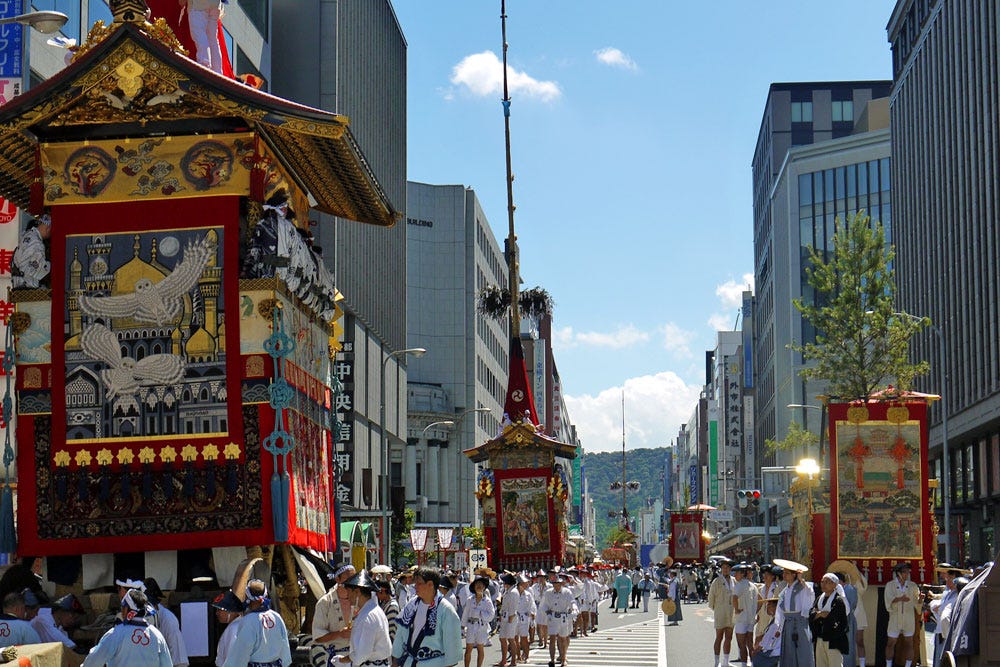
Outdoor Activities: Engage in Exciting Adventures
Japan in July offers an array of outdoor activities that cater to all adventure seekers. Contrary to the belief that July in Japan is solely about oppressive heat, the country provides numerous ways to stay active and cool.
Hiking and Trekking: Explore the lush greenery and stunning trails of Japan’s national parks. Mount Fuji is especially popular in July, as it’s the official climbing season. The weather is more stable, and trails are accessible.
Beach Activities: Head to Japan’s beautiful coastlines for some sun, sand, and sea. Okinawa boasts crystal-clear waters perfect for snorkeling and diving. Alternatively, visit Kamakura for a more laid-back beach experience.
Water Activities: Cool off with exhilarating water sports. Try white-water rafting in the rapids of Kiso River or stand-up paddleboarding on Lake Ashi, set against the backdrop of Mount Fuji.
Festivals and Matsuris: Participate in vibrant summer festivals, where you can enjoy traditional games and events. Gion Matsuri in Kyoto features parades and lively activities throughout the city.
July in Japan invites you to engage in these exciting adventures, making it a month full of action and discovery. Despite the heat, the wealth of outdoor activities ensures you won’t run out of things to enjoy.

Cultural Experiences: Participate in Traditional Events
When you visit Japan in July, you have the unique opportunity to immerse yourself in its rich cultural tapestry through traditional events. These experiences offer a deeper understanding of Japanese traditions and customs, making your trip truly unforgettable.
Why Participate in Traditional Events in July?
- Gion Matsuri: Held in Kyoto, this is one of Japan’s most famous festivals. It spans the entire month and features grand parades, traditional music, and exquisite floats.
- Tenjin Matsuri: Taking place in Osaka, this festival includes a dynamic procession of boats and fireworks, celebrating the deity of learning and art.
- Mitama Matsuri: At Tokyo’s Yasukuni Shrine, thousands of lanterns create a captivating display, honoring the spirits of the deceased.
Benefits of Attending These Events:
- Cultural Insight: Gain a profound appreciation for Japan’s heritage.
- Unique Memories: Experience something uniquely Japanese that you can’t find anywhere else.
- Social Connection: Meet locals and fellow travelers passionate about Japanese culture.
Visiting Japan in July offers an exhilarating blend of cultural experiences and natural beauty, but it also comes with its own set of challenges. The intense summer heat and humidity can be quite overwhelming for first-time visitors. Tourist spots are often crowded, making it essential to know how to navigate them efficiently. However, the rewards are plentiful; seasonal festivals bring a unique charm, and summer fireworks displays illuminate the skies in spectacular fashion. Knowing what to expect and how to prepare can make your summer trip to Japan both enjoyable and memorable.
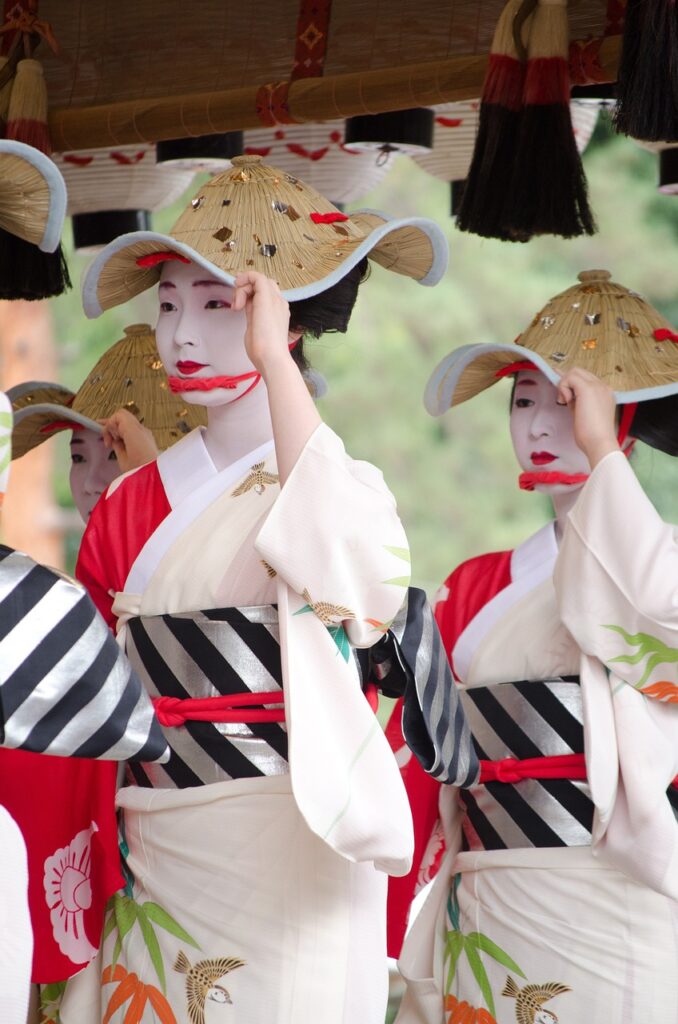
The Intense Summer Heat and Humidity
Visiting Japan in July introduces travelers to the peak of summer heat and humidity. The temperatures soar to around 30-35°C (86-95°F), often accompanied by high humidity levels. This combination can make outdoor activities quite challenging.
Tips for Managing Heat and Humidity:
- Stay Hydrated: Always carry water and drink frequently to prevent dehydration.
- Wear Light Clothing: Opt for lightweight, breathable fabrics like cotton or linen to stay cool.
- Use Sun Protection: Hats, sunglasses, and sunscreen are essential. The sun can be quite strong during this time.
- Take Breaks: Seek air-conditioned places like cafes or shopping malls to cool down periodically.
- Plan Outdoor Activities Wisely: Early mornings or late afternoons are the best times to venture outside. Midday heat can be overwhelming.
Comparatively, the heat in Japan in July can be more intense than in many Western countries due to the high humidity. Thus, preparation and awareness are key to enjoying your summer visit comfortably. By following these tips, you can make the most of your trip despite the scorching weather.
Crowded Tourist Spots and How to Avoid Them
Visiting Japan in July presents a unique charm but also comes with the challenge of crowded tourist spots. Here are some tips to sidestep the hustle and bustle:
- Visit Lesser-Known Sites: Opt for hidden gems like Nara’s lesser-visited temples or off-the-beaten-path villages.
- Early Mornings or Late Evenings: Popular destinations like Kyoto’s Kinkaku-ji or Tokyo’s Asakusa are less crowded early in the morning or just before closing.
- Day Trips: Consider short trips to nearby attractions such as Hakone or Nikko where you can experience the beauty of Japan in July without the teeming crowds.
Comparison Table: Crowded vs. Less Crowded Times
| Tourist Spot | Crowded Times | Less Crowded Times |
|---|---|---|
| Kinkaku-ji (Kyoto) | Midday | Early Morning |
| Disneyland (Tokyo) | Afternoon | Weekday Mornings |
| Osaka Castle | Weekends | Weekdays After 3 PM |
Additionally, always check for local events or festivals occurring around your planned visit dates. These events can significantly influence crowd levels. By planning strategically, you can enjoy the magic of Japan in July while avoiding the masses.
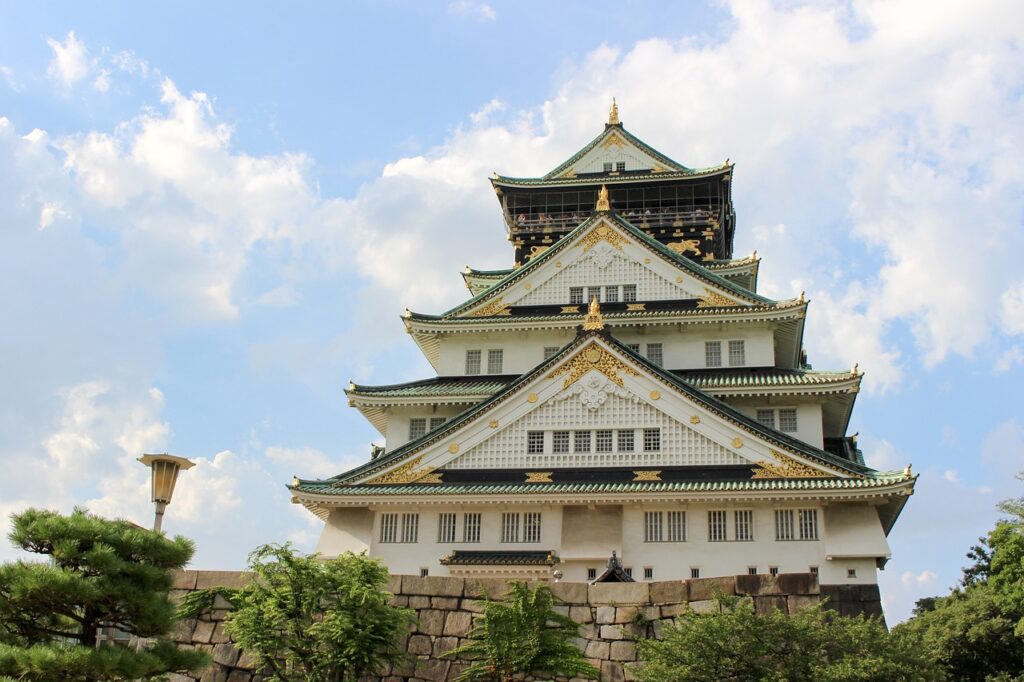
Seasonal Festivals and Their Unique Charm
When visiting Japan in July, one of the most enchanting experiences you can have is attending the seasonal festivals. These festivals, known as matsuri, offer a unique glimpse into Japanese culture, filled with colorful decorations, traditional performances, and vibrant local customs.
Some must-see festivals include:
- Gion Matsuri (Kyoto): Renowned for its grand processions and intricate floats, this festival dates back to the 9th century.
- Tenjin Matsuri (Osaka): Celebrated with boat parades and dazzling fireworks, it showcases Osaka’s rich history.
- Tanabata Festival (Various Locations): Also known as the Star Festival, it features elaborate displays of bamboo decorations and paper wishes.
Each festival has its own unique charm, but all share common elements like traditional dance (Bon Odori), food stalls selling seasonal delicacies, and community gatherings.
Comparison of Major Festivals:
| Festival | Location | Key Highlights |
|---|---|---|
| Gion Matsuri | Kyoto | Floats, traditional music, parades |
| Tenjin Matsuri | Osaka | Boat parades, fireworks |
| Tanabata Festival | Various | Bamboo decorations, paper wishes |
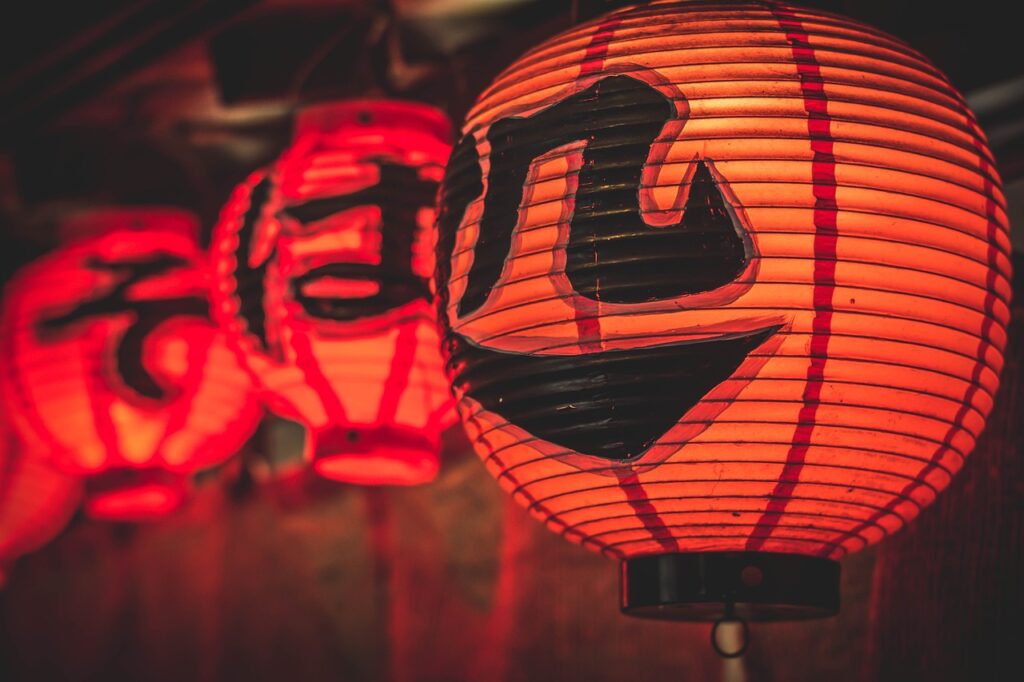
Tips to Enjoy Festivals:
- Arrive Early: To get a good view and avoid crowds.
- Dress Comfortably: Lightweight, breathable clothing is a must.
- Stay Hydrated: Carry a bottle of water to beat the summer heat.
These festivals are a testament to the rich cultural heritage of Japan in July, making them an unmissable highlight for anyone visiting during this time.
The Importance of Carrying a Handkerchief
When visiting Japan in July, you’ll quickly discover that carrying a handkerchief is more than just a quaint tradition—it’s a necessity. The intense summer heat and high humidity can make you sweat profusely. Here are a few reasons why a handkerchief becomes indispensable:
- Sweat Management: Due to the sweltering temperatures, a handkerchief helps to wipe away sweat and keep you comfortable.
- Hygiene: Public restrooms in Japan often lack paper towels or hand dryers. A handkerchief allows you to dry your hands after washing.
- Etiquette: In Japanese culture, it’s considered polite to avoid using public tissues for personal needs. Your own handkerchief can come in handy in these situations.
- Versatility: Small yet multifunctional, you can use your handkerchief for a variety of purposes, such as wrapping small items or cleaning surfaces.
Carrying a handkerchief while exploring Japan in July not only helps you stay comfortable but also demonstrates an appreciation for local customs. This simple item can make your trip significantly more pleasant and stress-free.
Public Transportation Tips During Summer
Navigating Japan in July can be challenging due to the intense heat and bustling tourist activity. Therefore, these transportation tips can make your experience more comfortable:
- Travel during off-peak hours: Avoid the morning rush (7-9 AM) and evening rush (5-7 PM) when public transport can be extremely crowded.
- Utilize air-conditioned trains and buses: Most public transportation is well-equipped with air conditioning, offering a refreshing break from the sweltering outside temperatures.
- Carry a hand fan and water bottle: Many stations and buses can become hot and crowded. A portable fan and staying hydrated can help you stay cool.
- Pre-book tickets: Reserved seating on long-distance trains like the Shinkansen provides a guaranteed spot and reduces travel anxiety.
- Opt for IC cards: Cards like Suica or Pasmo facilitate quicker transitions through stations, minimizing your time in the heat.
By keeping these tips in mind, your public transportation experience in Japan in July can be much more enjoyable and seamless.
The Beauty of Summer Fireworks Displays
Visiting Japan in July offers a spectacular experience with its mesmerizing summer fireworks displays. These events, known as hanabi taikai, light up the night sky and bring communities together in a festive atmosphere.
What Makes Them Special?
- Synchrony with Music: Many displays feature fireworks perfectly synchronized with music, creating a magical ambiance.
- Cultural Significance: Fireworks in Japan have historical roots dating back to the Edo period, symbolizing relaxation and enjoyment.
- Community Events: Fireworks festivals are often accompanied by street stalls selling local delicacies like yakitori and taiyaki.
Top Festivals in July
- Sumida River Fireworks: One of Tokyo’s largest displays, attracting millions of spectators.
- Nagaoka Fireworks Festival: Renowned for its grand scale and emotional impact.
- Tenjin Matsuri Fireworks: Held in Osaka, it’s part of one of Japan’s top three festivals.
Tips for Enjoying Fireworks
- Arrive Early: Secure a good viewing spot as places get crowded quickly.
- Bring a Mat or Blanket: Comfortably sit and enjoy the show.
- Stay Hydrated: July’s heat can be intense, so keep water handy.
Embrace the vibrant culture and awe-inspiring artistry of fireworks when you visit Japan in July.
Seasonal Foods and Drinks to Try
Experiencing Japan in July offers a unique culinary adventure with a variety of seasonal foods and drinks that you simply must try. The summer season brings an abundance of fresh, locally-sourced ingredients that are both refreshing and delicious.
Must-Try Foods:
- Unagi (Grilled Eel): Traditionally eaten during the Doyo no Ushi no Hi (Midsummer Day of the Ox), unagi is believed to boost stamina and ward off summer fatigue.
- Nagashi Somen (Flowing Noodles): This fun and interactive dish involves catching chilled somen noodles as they flow down a bamboo water slide. It’s a cooling delight perfect for hot summer days.
- Hiyashi Chuka (Cold Ramen): A chilled dish that combines noodles with fresh vegetables, ham, and a tangy soy-vinegar dressing.
Refreshing Drinks:
- Mugicha (Barley Tea): Often served chilled, this caffeine-free beverage is a summer staple in Japan and helps keep you hydrated.
- Umeshu (Plum Wine): Enjoy it over ice for a sweet and refreshing treat.
- Ramune (Soda): Known for its distinctive bottle and summer festival association, this carbonated drink comes in a variety of fruity flavors.
Trying these seasonal foods and drinks not only enhances your travel experience but also gives you a taste of Japanese summer culture.
Dealing with Mosquitos and Other Insects
Visiting Japan in July means encountering an array of insects, particularly mosquitos. These pesky bugs are notorious during the humid summer months. Here’s how to manage them effectively:
- Use Mosquito Repellent: Always carry a good quality mosquito repellent spray or lotion. Ensure you apply it liberally, especially on exposed skin.
- Pack Insect-Repellent Clothing: Consider wearing long sleeves and pants made from lightweight, breathable fabrics that are treated with insect repellent.
- Stay in Screened Areas: Opt for accommodations that provide screens or netted windows and doors to prevent mosquitos from entering.
Additionally, while enjoying the natural beauty of Japan in July, you may encounter other insects like cicadas and beetles. While mostly harmless, they can sometimes be a nuisance. Here’s what to do:
- Avoid Sweet-Smelling Products: Insects are attracted to floral and fruity scents. Avoid wearing perfumes or lotions with these scents.
- Carry Anti-Itch Cream: Despite your best efforts, bites might happen. Carry an anti-itch cream to ease any discomfort.
By following these tips, you can enjoy the vibrant summer experience in Japan in July without the unwelcome company of mosquitos and other insects.
The Benefits of Staying Hydrated
When visiting Japan in July, staying hydrated is crucial. The summer heat can be intense, and it’s easy to become dehydrated while exploring the beautiful scenery and vibrant cityscapes. Drinking water regularly ensures you feel energized and focused for your adventures.
Benefits of Staying Hydrated:
- Enhanced Physical Performance: Proper hydration helps maintain stamina during long walks and outdoor activities.
- Better Concentration: Staying hydrated keeps your mind sharp and alert, making it easier to navigate new environments and enjoy cultural experiences.
- Healthier Skin: Hydration aids in protecting your skin from the harsh summer sun, reducing the risk of dryness and sunburn.
- Improved Digestion: Drinking water can aid in digestion, which is particularly helpful when trying new foods and drinks in Japan.
Tips for Staying Hydrated in Japan in July:
- Carry a Water Bottle: Refill it frequently at water fountains or convenience stores.
- Drink Electrolytes: Opt for sports drinks like Pocari Sweat or Aquarius to replenish lost minerals.
- Consume Water-rich Foods: Enjoy fruits like watermelon and orange, which are both hydrating and refreshing.
Remember, staying hydrated is key to fully enjoying your summer experience in Japan!
Traditional Summer Clothing and Styles
When visiting Japan in July, embracing the traditional summer clothing styles can enhance your experience and keep you comfortable in the intense weather. One standout piece of attire is the yukata, a light summer kimono made from breathable cotton.
Key features of the yukata include:
- Material: Lightweight cotton provides excellent ventilation.
- Design: Available in vibrant colors and patterns, reflecting Japanese culture.
- Occasions: Commonly worn during summer festivals (matsuri) and fireworks displays (hanabi taikai).
In addition to the yukata, you might also spot people wearing jimbei. This consists of a short-sleeved top and matching shorts, also made from breathable materials. Ideal for hot and humid days, jimbei offers both comfort and style.
Comparison of Yukata and Jimbei
| Feature | Yukata | Jimbei |
|---|---|---|
| Material | Lightweight cotton | Breathable fabric |
| Wear | Wrapping around the body | Top and shorts combination |
| Occasions | Festivals, casual outings | Casual home wear, festivals |
Lastly, pairing traditional footwear like geta (wooden sandals) or zori (straw sandals) with your attire completes your traditional Japanese summer look. Embracing these styles not only helps you handle the summer heat but also allows you to immerse yourself in the local culture.
Exploring Hidden Summer Gems
Japan in July offers more than just its well-known tourist spots; it also boasts less crowded, hidden gems perfect for summer exploration. Let’s dive into a few of these off-the-beaten-path locations:
- Kamikochi Valley: Located in the Japanese Alps, this picturesque valley offers serene hiking trails, stunning mountain views, and a break from the summer heat.
- Aogashima Island: Situated in the Philippine Sea, this volcanic island provides a unique adventure with its lush landscapes and starry night skies.
- Shimanami Kaido: This scenic cycling route connects Hiroshima and Ehime, passing through small islands and offering breathtaking coastal views.
Besides these locations, exploring hidden temples and shrines not listed in every tourist guide can provide a unique cultural experience. For example:
- Daisho-in Temple in Miyajima: Less crowded but equally beautiful compared to more famous sites.
- Otagi Nenbutsu-ji in Kyoto: Adorned with humorous stone statues and nestled away from the bustling centers.
Finding these hidden summer gems allows you to experience Japan in July without the overwhelming crowds, all while discovering the country’s rich natural and cultural tapestry.
Understanding Japan’s Seasonal Etiquette
When visiting Japan in July, understanding and respecting seasonal etiquette can elevate your experience. Japanese culture places high regard on manners, especially in social settings during summer.
Key Etiquette Tips:
- Greetings and Gifts: In summer, giving ochuugen (mid-year gifts) is a common practice. When visiting friends or participating in festivals, presenting these small tokens of appreciation is considered polite.
- Dressing Appropriately: Adapt to the heat by wearing light and breathable fabrics. However, ensure your attire remains respectful, especially in temples or traditional settings. Yukata (casual summer kimono) are a stylish and acceptable choice for many events.
- Public Transportation: During peak summer, trains and buses can get crowded. Keep your voice low, avoid eating, and always offer your seat to those in need, such as the elderly or pregnant women.
- Cleanliness: As the humidity can lead to sweating, carry a handkerchief or personal towel to freshen up and maintain hygiene. Also, use designated smoking areas and always dispose of trash properly.
By adhering to these guidelines, your visit to Japan in July will be both enjoyable and respectful, allowing you to immerse yourself fully in the rich cultural tapestry.
Beach Destinations Worth Visiting
When exploring Japan in July, beach destinations offer a refreshing escape from the intense summer heat. Here are some must-visit beaches:
1. Okinawa
- Highlights: White sandy beaches, clear waters, and vibrant coral reefs make Okinawa a top destination.
- Activities: Snorkeling, scuba diving, and sunbathing.
2. Kamakura
- Highlights: Enoshima Island and scenic coastlines blend history with beach relaxation.
- Activities: Surfing and visiting local temples.
3. Shirahama
- Highlights: Famous for hot springs and soft white sand, this beach in Wakayama attracts many visitors.
- Activities: Hot springs, beach volleyball, and swimming.
4. Amami Oshima
- Highlights: Known for lush greenery and less crowded beaches, perfect for a tranquil getaway.
- Activities: Kayaking and nature walks.
Comparison Table:
| Beach Destination | Highlights | Activities |
|---|---|---|
| Okinawa | White sands, coral reefs | Snorkeling, Scuba diving |
| Kamakura | Enoshima Island, temples | Surfing, Temple visits |
| Shirahama | Hot springs, white sand | Hot springs, Beach volleyball |
| Amami Oshima | Lush greenery, tranquility | Kayaking, Nature walks |
These beach destinations capture the diverse charm of Japan in July, offering something for everyone, from adventure seekers to those seeking relaxation.
How to Enjoy Outdoor Activities Safely
Exploring Japan in July offers countless opportunities for outdoor adventures. However, the key to enjoying these activities lies in staying safe under the intense summer sun.
- Protective Clothing: Wear light, breathable fabrics to stay cool. Consider traditional Japanese summer attire like yukata, which is both comfortable and stylish.
- Sun Protection: Always use sunscreen with a high SPF to shield your skin. Don’t forget to reapply every few hours, especially if you’re sweating or swimming.
- Hydration: Carry a water bottle and drink fluids frequently. Green tea and sports drinks can also help maintain electrolyte levels.
- Time Management: Schedule outdoor activities during the cooler parts of the day, such as early morning or late afternoon, to avoid the peak heat.
Safety Check:
| Activity | Best Time to Enjoy | Safety Tips |
|---|---|---|
| Hiking | Early Morning | Wear a hat, apply insect repellent |
| Beach Visits | Late Afternoon | Stay under shade, use waterproof sunscreen |
| Temple Visits | Early Morning | Carry a hand fan, wear light footwear |
While enjoying Japan in July, always prioritize your well-being. Follow these tips, and you’ll have a safe, memorable experience.
Popular Summer Events and Experiences
When exploring Japan in July, you’ll discover a variety of popular summer events and experiences that showcase the country’s vibrant culture and traditions. Here are a few not to miss:
Gion Matsuri: Held in Kyoto throughout July, this event is one of Japan’s most famous festivals. It features elaborate floats, traditional music, and historical reenactments.
Tanabata Festival: Celebrated on July 7th, mainly in Sendai and Hiratsuka, the Tanabata Festival honors the legend of star-crossed lovers with colorful decorations and lively parades.
Sumida River Fireworks: Taking place on the last Saturday of July in Tokyo, this fireworks display is among the largest in Japan. The spectacle draws millions of spectators.
Fuji Rock Festival: If you love music, you’ll enjoy this international music festival set in the idyllic surroundings of Naeba Ski Resort in Niigata.
Comparison Table of Events:
| Event | Location | Date(s) | Highlights |
|---|---|---|---|
| Gion Matsuri | Kyoto | Entire July | Floats, traditional music, parades |
| Tanabata Festival | Sendai, Hiratsuka | July 7 | Colorful decorations, parades |
| Sumida River Fireworks | Tokyo | Last Saturday of July | Fireworks display |
| Fuji Rock Festival | Niigata | Late July | International music acts |
Visiting Japan in July provides an opportunity to immerse yourself in these captivating events, creating unforgettable memories.
Navigating Japanese Summer Sales
When visiting Japan in July, you’ll encounter vibrant summer sales, known locally as natsu no uridashi. These sales offer fantastic opportunities to purchase items at significantly reduced prices. Here’s how to make the most of these sales:
Timing:
- Early July: Major department stores and malls kick off their summer sales in early July.
- Obon Period (Mid-July): Another wave of discounts appears during the Obon holiday, offering even steeper reductions.
Where to Shop:
- Department Stores: Places like Isetan or Takashimaya offer upscale items at discounted prices.
- Shopping Streets: Areas such as Shibuya and Shinjuku have numerous smaller shops that participate in the sales.
- Outlet Malls: Outlets like Gotemba Premium Outlets offer branded goods at significant markdowns.
Tips:
- Go Early: To avoid crowds and have the best selection.
- Bargain Hunting: Use your knowledge of typical prices to spot the best deals.
- Summer Essentials: Stock up on summer-specific items like lightweight clothing, cooling gels, and fans.
In conclusion, navigating summer sales in Japan in July can be a rewarding experience if you plan strategically and arrive early. Happy shopping!
Staying in a Traditional Ryokan During Summer
Experiencing Japan in July includes staying in a traditional ryokan, a unique and immersive accommodation option that offers a glimpse into Japanese culture. While ryokans provide comfort and authenticity, their charm amplifies during the summer months. Here are key points to consider:
- Seasonal Amenities: Many ryokans provide yukatas (light cotton kimonos), perfect for the hot summer weather. These garments keep you cool and comfortable while allowing you to participate in local traditions.
- Natural Surroundings: Ryokans are often set in serene, natural locations. You can enjoy shade from lush greenery and dips in onsen (hot springs) to soothe the day’s heat away.
- Gastronomic Delights: Summer seasonal foods, such as unagi (eel) and chilled soba noodles, refresh and energize you. Traditional multi-course meals (kaiseki) offer a taste of seasonal ingredients and culinary craftsmanship.
- Air Circulation: Many ryokans utilize tatami mats and paper sliding doors (fusuma) to facilitate airflow, reducing the summer heat naturally. Electric fans or air conditioning units supplement this for added comfort.
Choosing to stay in a ryokan when visiting Japan in July enriches your experience by combining cultural immersion with practical comfort for the summer season.
Preparing for Sudden Summer Showers
When visiting Japan in July, one must prepare for sudden summer showers that can appear without warning. These frequent, short bursts of rain are common during Japan’s rainy season. Here’s how you can stay ready:
- Carry a Compact Umbrella: A lightweight, foldable umbrella can be easily stored in your bag and will keep you dry during unexpected downpours.
- Wear Quick-Dry Clothing: Opt for fabrics that dry quickly to stay comfortable if you do get wet. Avoid heavy or absorbent materials.
- Waterproof Footwear: Water-resistant shoes or sandals will protect your feet and keep them dry, which is essential for remaining comfortable throughout the day.
- Pack a Light Rain Jacket: A thin, packable rain jacket can be a lifesaver. It’s easy to carry around and provides excellent protection against sudden showers.
- Zip-lock Bags for Electronics: Protect your valuable electronics like phones and cameras by storing them in zip-lock bags during rainy spells.
By following these tips, you can confidently handle Japan’s unpredictable weather and ensure your trip remains enjoyable, despite the occasional rain shower.
Cultural Differences in Handling Summer Heat
Experiencing Japan in July can be a fascinating dive into how cultural practices shape daily life, especially in dealing with the summer heat. Here are a few unique ways the Japanese handle the blazing weather:
- Handkerchiefs and Towels: It’s common to see people carrying small handkerchiefs or hand towels. These are used to dab away sweat, maintaining a sense of cleanliness and comfort.
- Uchiwa and Sensu Fans: These traditional Japanese fans, Uchiwa for the rigid paddle style and Sensu for the folding type, are not just functional but also beautifully crafted. They’re perfect for creating a personal breeze.
- Parasol Umbrellas: Parasol umbrellas, or higasa, are popular among men and women. They offer a stylish shield from the sun’s intense rays.
- Hydration Stations: In public areas like parks and train stations, you can find vending machines stocked with a variety of cold drinks. Tip: Try a bottle of Pocari Sweat, a popular electrolyte beverage.
Unlike some Western cultures, where air conditioning might be cranked up, the Japanese adopt a more harmonious approach with nature, subtly integrating these customs into their daily routines to stay cool. Embracing these practices can make your visit to Japan in July more comfortable and culturally enriching.
